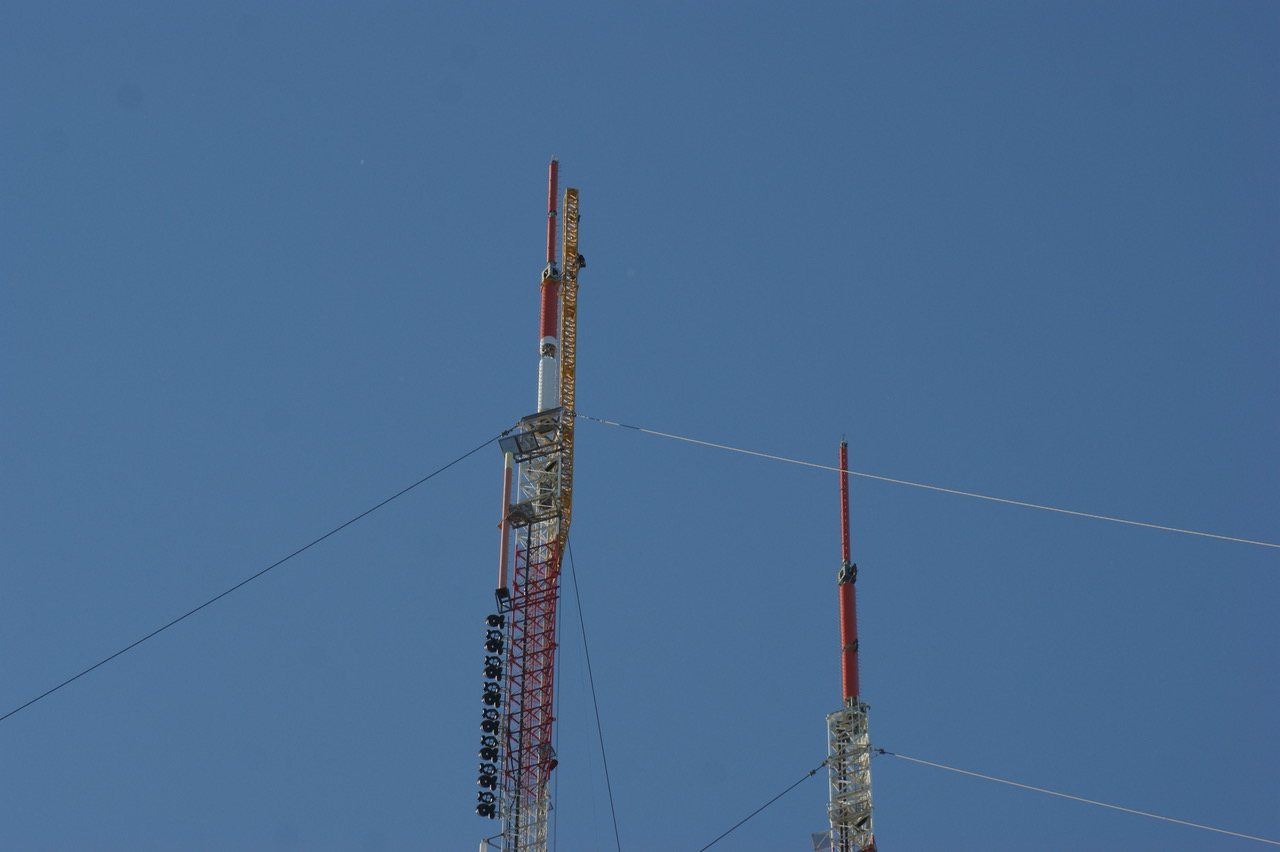
MINNEAPOLIS-ST. PAUL—WUCW-DT, the CW affiliate here, has gone on air with a new Dielectric UHF antenna that employs an end-fed pylon system and reimagines the design of a traditional stacked antenna array, Dielectric said.
The challenging E-Type antenna design addresses current tower code requirements for exposed transmission line and was delivered in a modular configuration that simplified the antenna replacement project for Tower King II, which managed all site preparation and installation work. The system also retained the existing Dielectric repack antenna on the top position without requiring extensive tower modifications, it said.
Several broadcast antennas are located on the south tower at Telefarm Towers, a two-tier transmission site for TV and FM radio broadcasters.
To optimize tower real estate and provide true omnidirectional performance, WUCW and ABC affiliate KSTP-DT have long transmitted from a top-mounted broadband stacked antenna system. The original system included a Dielectric TU Series Deltastar panel antenna on the lower position of the stacked array, it said.
The existing antenna, configured as a “five-around panel antenna,” was supported by a wide, robust mast. As replacement loomed, Dielectric recognized the project would prove to be one of the most challenging it has ever faced, Dielectric said.
“WUCW engineers first considered making an adapter for the top antenna and the existing support system, but changed course toward preferring a modernized stacked array that was simpler and provided enhanced long-term reliability over the panel system,” said James Butts, a mechanical engineer at, Dielectric.
“While that was indeed the result, the work required to get there made this one of the most mechanically unique UHF antennas we have manufactured," he continued. "This WUCW antenna is a very large variant of our E-Type antenna design that was carefully engineered to meet the customer’s unique design needs.”
The professional video industry's #1 source for news, trends and product and tech information. Sign up below.
One big challenge was finding the best way to run the transmission line to the top KSTP antenna. Previous revisions of design codes allowed Dielectric to run the line up the side of an antenna mast, exposed to the elements without increasing the mast drag coefficient, the company said.
“The latest code revisions required by Telefarm impose mast designs with exposed appurtenances such as transmission line with higher drag coefficients, which greatly increase wind loads,” said Butts. “We had to come up with an antenna feed system design that would obscure the transmission line without increasing the windload on the bottom antenna. That meant routing the feed to the top KSTP antenna under the radome of the bottom WUCW antenna,” said Butts.
Dielectric designed a two-piece mast for WUCW that measures 20 inches in diameter and is two inches thick. The antenna employed innovative technology to verify WUCW maintained an omnidirectional azimuth pattern in both the horizontal and vertical patterns. Typically, the azimuth patterns are distorted on the bottom of a stack antenna due to the transmission line to feed the top. This, along with the mechanical stoutness of the antenna, makes the deployment an innovative achievement, the company said.
To make installation easier, Dielectric split the new bottom antenna into two pieces, adding a flange in the middle, making it possible for the tower crew to raise the antenna and split the lifting load on the tower and ginpole. Total weight without the split would have been close to 30,000 pounds, but the design made it possible to connect the two pieces with the flange, it said.
“The biggest challenge mechanically was to keep the weight of those two sections low enough for a potential helicopter lift or a reasonably sized ginpole,” said Butts.
Splitting the load in half gave the Tower King II crew more installation options. “We set the first section and then the second section, and then connected the bottom and top antennas with the transmission line,” said Tower King II owner and President Kevin Barber. “In the end, the thought that Dielectric put into the design and the modularity made the installation very clean and easily achieved.”
More information is available on the Dielectric website.
Phil Kurz is a contributing editor to TV Tech. He has written about TV and video technology for more than 30 years and served as editor of three leading industry magazines. He earned a Bachelor of Journalism and a Master’s Degree in Journalism from the University of Missouri-Columbia School of Journalism.

